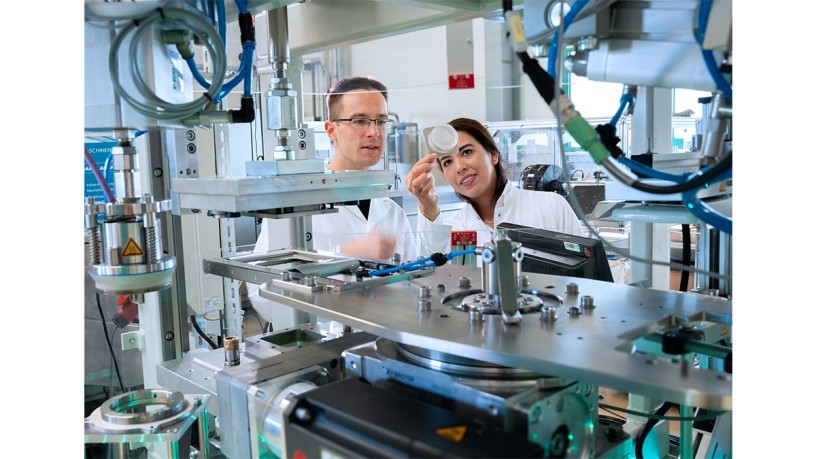On-site analysis of ergot alkaloids in wholemeal grains
Validation data
The validation data was impressive. The mean recovery rate of ergot alkaloids in fortified wholemeal rye was almost 100 %. The detection limit for ergocristine was determined to be 0.4 ng/zone and the limit of quantification 1.2 ng/zone. The repeatability or relative standard deviation (%RSD) was 4.1 % and the coefficient of determination of the analytical response (R²) was 0.9918. In five samples analysed, the levels of ergot alkaloids were found to be below the current maximum level of 500 µg/kg for ground rye products. The results using 2LabsToGo analysis were compared with the results of conventional HPTLC instruments and successfully confirmed. [1]
Advantages at a glance
The compact, miniaturised 2LabsToGo system (8 kg, 31 cm x 26 cm x 34 cm) combines all the tasks of planar chromatography in an automated, portable all-in-one system (Fig. 2), enabling cost-effective quality control directly in milling operations for the first time. Miniaturisation proves to be advantageous when comparing the costs, weight and space requirements of the instruments. Compared to conventional HPTLC devices, the device costs have been reduced by a factor of 40, the weight by a factor of 9 and the space requirement by a factor of 8. This has already been calculated in detail for the screening of saccharides in foods and lactose-free foods [2] and applies here in the same way. It can also be combined with toxicological detection (using a planar bioassay that indicates pollutants) [3] thereby unifying technologies from four different disciplines (Fig. 2).
Miniaturisation, if it does not go too far (it should still be operable by the operator's hands), reduces instrumental disadvantages and challenges. For example, a smaller plate surface facilitates uniform image illumination and a slimline device design reduces sources of error. Individual system components fulfil several functions in order to minimise the space required by the system. The 2LabsToGo system has a low ecological footprint in terms of low material consumption (resource conservation and dematerialisation). The power consumption is comparatively very low and it can also be operated locally with solar cells. This makes it a very environmentally friendly laboratory of the future that enables sustainable analyses in production facilities.
At an international workshop at Justus Liebig University (JLU) in Giessen, Germany in September 2024, scientists will assemble their own open-source, do-it-yourself 2LabsToGo system (at a production cost of approx. 4,000 euros) for the first time, which will be self-empowering and also facilitate subsequent device maintenance/repair. The non-patented, open-source development of the system allows customised adaptations and individual changes at any time.

©JLU Gießen
Contact
Prof Gertrud E. Morlock
Justus Liebig University, Giessen, Germany
Professor for Food Sciences
Heinrich-Buff-Ring 26-32
35392 Giessen
Germany
www.uni-giessen.de/food
Expression of thanks
Thanks to the German Federal Office of Bundeswehr (Armed Forces) Equipment, Information Technology and In-Service Support (Project E/U2AD/KA018/IF565) and Merck for their support with HPTLC plates.
Literature
[1] Jakob K, Schwack W, Morlock GE. Food Chem. 453 (2024) 139593
[2] Morlock GE, Koch J, Schwack W et al. J. Chromatogr. A 1688 (2023) 463720
[3] Morlock GE, Anal. Chim. Acta 1180 (2021) 338644




